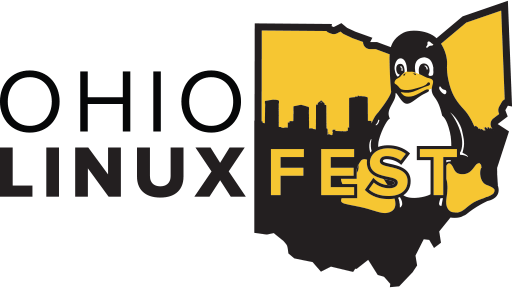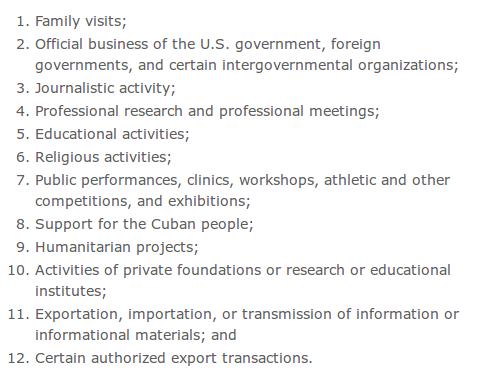Over the weekend, Chris Aniszczyk posted a link on Twitter to a very interesting article by Matt Klein about his decision not to start an open source company around his project, Envoy. I thought it raised a number of interesting points worth a few comments.
First off, Matt works for Lyft, which, in case you haven’t heard of it, is Uber without the moral decay. I abandoned Uber some time ago, despite being an early adopter, and I’ve been very happy with Lyft. One of the main differences is that Lyft allows you to tip your driver, which I almost always do with few exceptions. The fact that Lyft is able to keep and motivate people like Matt speaks volumes for their corporate culture.
It also demonstrates a wonderful trend of commercial companies starting and maintaining open source projects. I’ve been working with open source for almost two decades and I can remember when any software developed at a company was considered confidential. To this day there are a number of vendors who consider their SNMP MIB files (which, I should point out, are really only useful to people who have purchased their products) proprietary information. Companies like Lyft, Paypal and Facebook, none of which would self-identify as open source companies, have gained a lot of value for little cost by making the tools they use open source.
When talking about open source for the enterprise, I often talk about the fact that it is the processes that a company uses to serve its customers that make it unique and define its value, not the tools used by the company. So often with commercial software you have to change those process to fit how the application thinks you should work, and in the process you lose some part of what makes you special to your customers. With open source you can fit the application to those processes. It is how you use the tools and not the tools themselves that is important, and so there is a lot to gain and little to lose by making them open source.
Getting back to Matt’s article, he is a project maintainer for Envoy, which is a “high performance C++ distributed proxy and communication bus designed for large service oriented architectures.” While I don’t consider myself a coder so I don’t claim to fully understand the its advantages, I do recognize enough buzzwords in that sentence to know that it would attract some attention from investors, and Matt was approached about leaving Lyft to start a commercial business around Envoy. He decided not to, and as I read his article about his decision I realized I’d found a kindred soul, someone who was more interested in creating something of value that would last versus making a quick buck.
He had me with this paragraph:
In my opinion, the best opportunity to commercialize OSS lies with projects that can be easily turned into SaaS products. Ultimately, even if software is completely open, many customers are happy to pay for a turnkey solution that “just works” and has a defined SLA with 24/7 monitoring and support. In some sense, customers pay for the operational expertise that comes from deeply understanding and running the software, versus the software itself.
Amen.
I’ve been making a living on open source for 15 years now working with OpenNMS, and I’ve spent a lot of time thinking about business models. We started out with the “service and support” model, which kept the doors open but limited growth. Then our clients started asking us for features, so we added custom development, which was time intensive but allowed us to finance OpenNMS features which attracted even more customers as the platform became more powerful. When we hit the problem of trying to balance the “release early, release often” philosophy of open source with the need for stability, we adopted the Red Hat model of splitting our application into a feature-rich, rapidly developed release (which we call Horizon™, similar to Fedora) and a more stable, subscription-based release that may lag in features but is better suited production environments (which we call Meridian®, similar to RHEL). But ultimately we came to the decision that what we really wanted to do was to offer OpenNMS as a service.
One company that inspired that decision was Automattic, maintainers of WordPress. I don’t think I know of a more powerful piece of software that is easier to install. They have a famous “5 Minute Install” that is quite simple. First, you drop the software into the webroot of your web server of choice. Next, you create a database account on your database of choice with certain permissions. Then you navigate to a web page and follow the prompts.
However, for a lot of people, terms like “webroot” are gibberish, and even with WordPress you still need some minimal database skills to maintain it. So Automattic offers up WordPress as a service. For a small monthly fee they’ll do everything for you, and this has generated revenues on the order of tens of millions of dollars per year.
OpenNMS is way more complicated, thus the value of a hosted version should be greater. In order to do so we needed some way to access the client’s network in a secure fashion, so with Horizon 20 we introduced the Minion. The Minion software allows for OpenNMS functionality to be distributed. It is built on the Karaf container, so once installed all of its features can be remotely managed. For smaller networks, the Minion can be sold as an appliance and talk to a hosted version of OpenNMS. It can bring a complex and powerful tool like OpenNMS into the hands of the masses.
For larger companies it solves issues of scale as Minions can be deployed to cover even the largest networks (our goal is IoT scale). We’ve had them in production at one client for months now handling over 2 million events an hour. That translates to around 555 events per second, although the system itself can handle over 10,000 events per second so they have room to grow. If they ever hit that limit, we can simply add more Minions. They have the option of hosting all of OpenNMS in their own data center, or they could choose a hybrid model where some of the functionality is outsourced.
For pretty much the first time in the history of OpenNMS, we are seriously and actively seeking investment. There are a number of companies entering this space who have raised enormous amounts of money, and we think we can be competitive for far less money and provide a better solution. Plus, also for the first time in the history of OpenNMS, we have a reason to make it easier to use versus spending all of our resources making it more powerful.
Matt talks about investment in his post (remember Matt? As usual, I’ve made this all about me. Meeee!) It was actually his stories about dealing with investors that prompted me to write this. As Envoy started to get some traction, investors wanted him to leave and start a company. He writes:
Over the last few months I’ve been told by several investors that no OSS has become ubiquitous without having explicit commercial backing. I think this is false and is situation dependent. If anything, I would argue that if I were to leave Lyft now and start a platform company around Envoy, it will decrease the chance of Envoy becoming ubiquitous, primarily because it would negate all of the reasons laid out above.
That first sentence is interesting, since “ubiquitous” and “commercial” are a little vague. I would make the claim that the Apache web server was ubiquitous until its success spawned NGINX, and it was backed by the Apache Software Foundation which is a non-profit. Is a foundation “commercial”? The idea that for a project to become successful it needs a number of people to spend a lot of time working on it seems obvious, and the best way to achieve that is to pay those people to work on it.
He goes on to write:
It took me a lot of time to ultimately understand the previous simple point. Investors are extremely persuasive. They capitalize on “fear of missing out.” However, it’s important to realize that the opportunity cost is hugely mismatched between investor and company.
When he writes “investors” above I believe he means specifically venture capitalists. We’ve talked with a few VCs in the past and I can remember the almost “strong arm” tactics they used. If I hear “a rising tide lifts all boats” one more time, I might have to hit somebody. I’m not saying that all VCs are the same, but many of them come across as gamblers and not investors. I’m risk friendly but I don’t gamble. I’m heavily invested in wanting to build something with OpenNMS that outlasts me (it is already much bigger than me as the team I work with has way more to do with its success than I do) and I don’t want to gamble with it.
I do hope that there are some investors out there that can appreciate that aspect of our company as well as the fact that we’re profitable, have mature products and wonderful customers. Perhaps private equity or perhaps another company that shares our vision and wants to advance the project through acquisition. In any case we’re looking for them.
When I was a young man, old guys like I am now would tell me “work on something you love, not just for the money”. I always dismissed it with the thought that with enough money I can buy love. When you immerse yourself in something as personal as an open source project for ten to twelve hours a day, year after year, you really do have to love it and the satisfaction you get just can’t be bought. Matt’s thoughts are similar:
Ultimately, on a personal level I’m just having too much fun solving tough computer science problems at large scale at Lyft and building a community around Envoy. The bar to do something different is therefore extremely high, and it took a long time to realize that it’s perfectly OK to accept that and keep going down the existing path that I’m on. On another level, leaving now to start a company would feel very much like not following through on my original goal of open sourcing Envoy; the industry desperately needs a high quality and community-driven solution to microservice networking. Follow-through is something I take very seriously.
With that attitude the success of Envoy is almost assured.



